
How Leah Cohen Mashes Up Iconic Asian Flavors and Traditions at Piggyback NYC, in Five Dishes
Back when chef Leah Cohen helmed one solo project — the raucous, keg-slinging, New York Times-starred Pig and Khao that she debuted in 2012 — her creative juices would flow, but her southeast Asian-focused menu didn’t have a place for all of it. So, she bottled it up, and in 2020, granted it freewheeling, globe-trotting rein at her third restaurant, Piggyback NYC, located near Penn Station and Madison Square Garden, where she continues to draw from iconic dishes that she ate during her travels through Japan, Korea, Hong Kong, China, Thailand, Indonesia, Vietnam, and the Philippines. (Her second restaurant, Piggyback Bar, opened in Jersey City, N.J., in 2018 but closed in 2019).
In March 2020 amid a global health crisis, Piggyback shut up shop, only three and a half months after opening. Now, however, it’s back up and running — and still hawking a menu that puts an irreverent, playful spin on pan-Asian cuisines. Take for instance, Cohen’s hamachi crudo in a Balinese sambal matah, or her Chinese five-spice shrimp with kewpie lime mayo. Her ingredient list jumps from bonito flakes and calamansi juice to gochujang, galangal, and bone marrow.
Putting these dishes together has not been without its challenges, however. Piggyback reopened in October in a restaurant industry dealing with labor shortages (she’s two or three cooks short, which means fewer items on the menu); sourcing disruptions (“Prices are crazy; supplies are small,” Cohen says); commuter flows on an indefinite hiatus (“Midtown is just not what it used to be,”); and a moratorium on her annual recipe research and development trips through Asia where she could “always come back with a ton of ideas.”
Adversity hasn’t derailed Cohen’s plans though. And if that means trawling the city for lumpia wrappers, the Filipina-Jewish chef is up for it. “I’ve been to all the Filipino supermarkets in Queens and Jersey City. I’ve called 20 places, and no one carries it,” she says. “They all just say they can’t get it right now.” Quick to adapt, she’s subbed in a spring roll wrapper to cloak a savory, textured filling of beef, pork, and water chestnuts.
While Cohen longs for those “Oh my God” moments of biting into a dish and getting inspired during her global jaunts, she’s recreating them now at Piggyback. Here are five dishes that are standing up to the pandemic with a firm salute to her favorite iconic foods from east and southeast Asia.
- New on Resy: Yakitori Totto, Marian’s, Genesis House, and More
- The December Hit List: Sunken Harbor Club, La Bonne Soupe, 8282, and More
- How Bonnie’s Calvin Eng Pushes Cantonese American Food Forward, Through Five Dishes
- How Sofreh’s Nasim Alikhani Honors Iranian Cooking Traditions, In Five Dishes
- The Resy Guide to New York’s Essential Cozy Locales
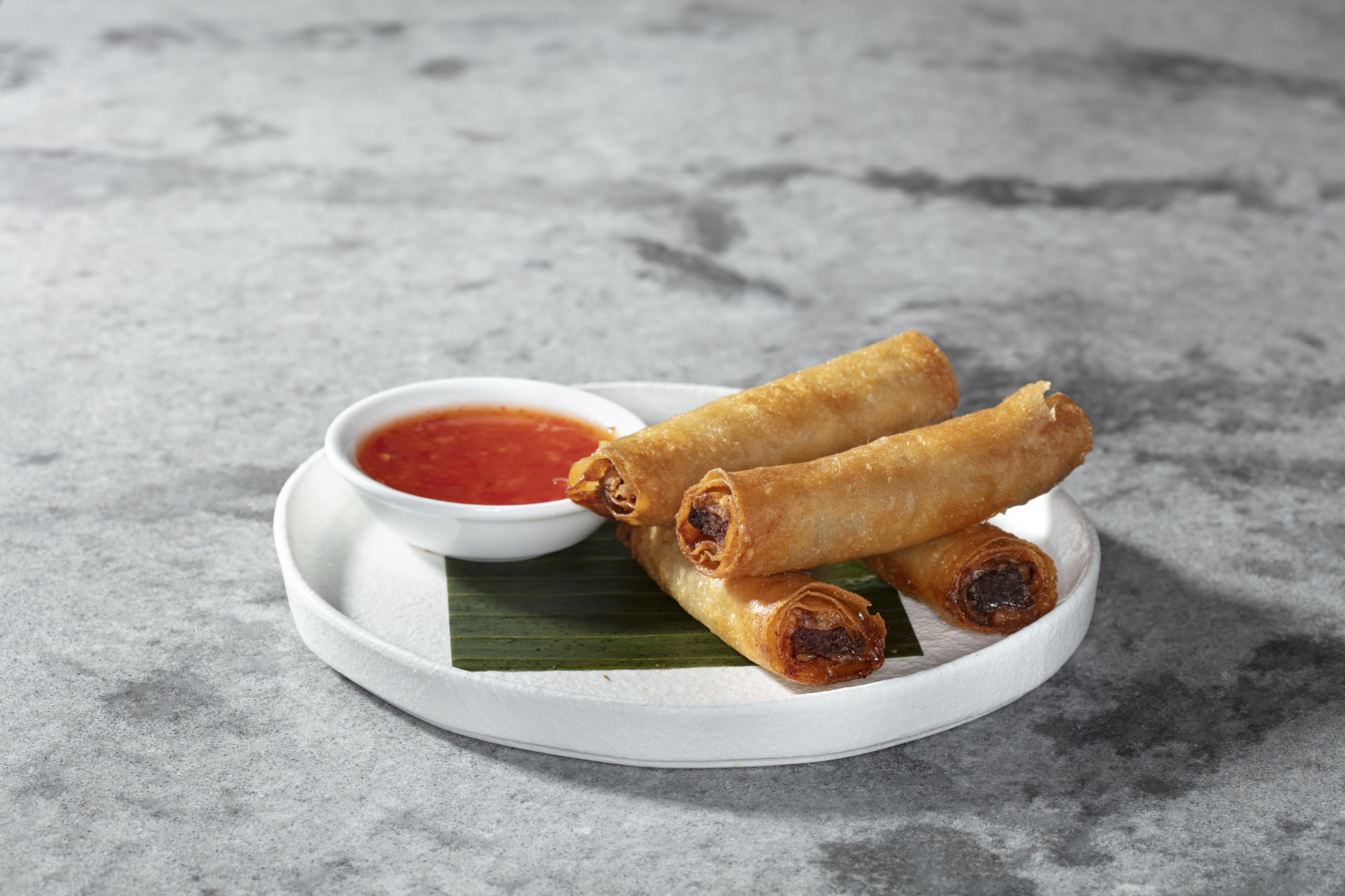
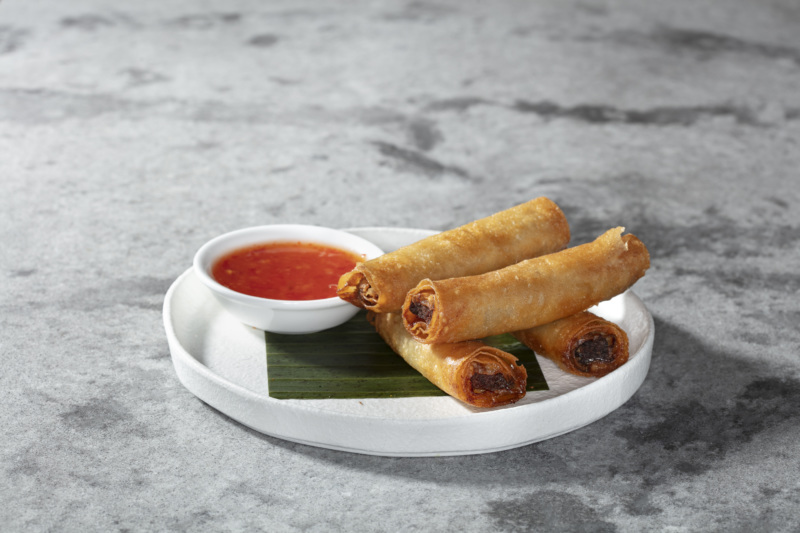
1. Lumpia
“Lumpia is one of my favorite dishes. It is a Filipino spring roll. My parents told me that I was eating it when I was five years old since my mom is from the Philippines. Because Piggyback is in Midtown, we have a big bar. We wanted to have food that was bar-friendly for people that were just coming in for happy hour. Or you know, before they were going to Madison Square Garden for a game or concert, and lumpia is just that. It goes great with beer.
I use a mixture of beef and pork although traditionally, beef is not that commonly used. But I think that the combination gives it a really nice flavor and texture, and then it has the aromatics like garlic, ginger, onions, and for added texture, water chestnuts and carrots. And that just gets rolled in a spring roll wrapper or lumpia wrapper, which is more like a pastry round wrapper. We fill them, fry them, and then they get served with sweet chile sauce.”

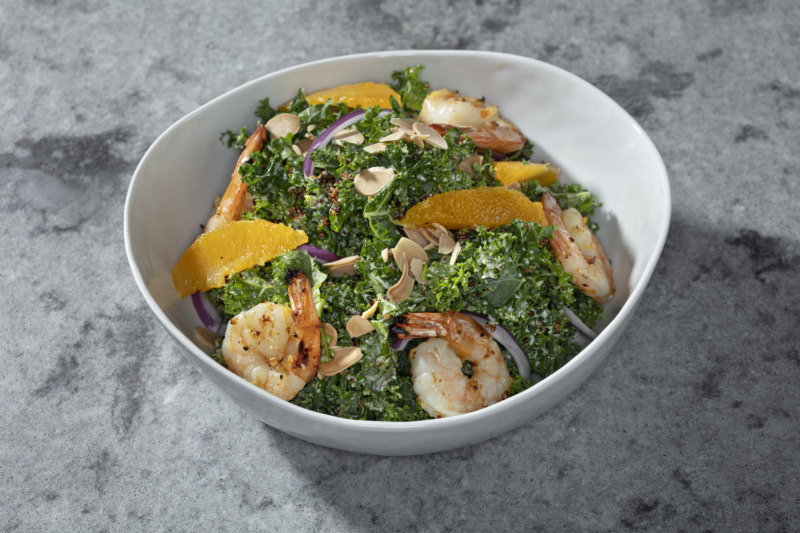
2. Prawn Salad
“This is based off of a Thai salad that I had at one of my favorite restaurants in Bangkok, called Soei. [My husband and business partner] and I would go there every year, whenever we were in Bangkok. The last time I went there, unfortunately, was over two years ago. It’s a place that we found out through Andrew Zimmern. He featured it on one of his shows. The chef is there all the time. So, we take pictures with him every time we’re there.
The restaurant is out of the way, outside the city. There, they have these huge river prawns that the restaurant uses for salads. Obviously, we don’t have those river prawns, but we do use fresh prawns at Piggyback. They’re lightly poached in salted water. The dressing is lime juice, fish sauce, Thai chiles, palm sugar, and garlic, and then it’s topped with a lot of Thai basil and freshly sliced lemongrass, some chiles, shallots, and tomatoes. Then we use a little calamansi juice, which is a citrus from Southeast Asia, in the dressing. I really like this dish because it’s light, refreshing, and easy to eat. And it is quite spicy.”
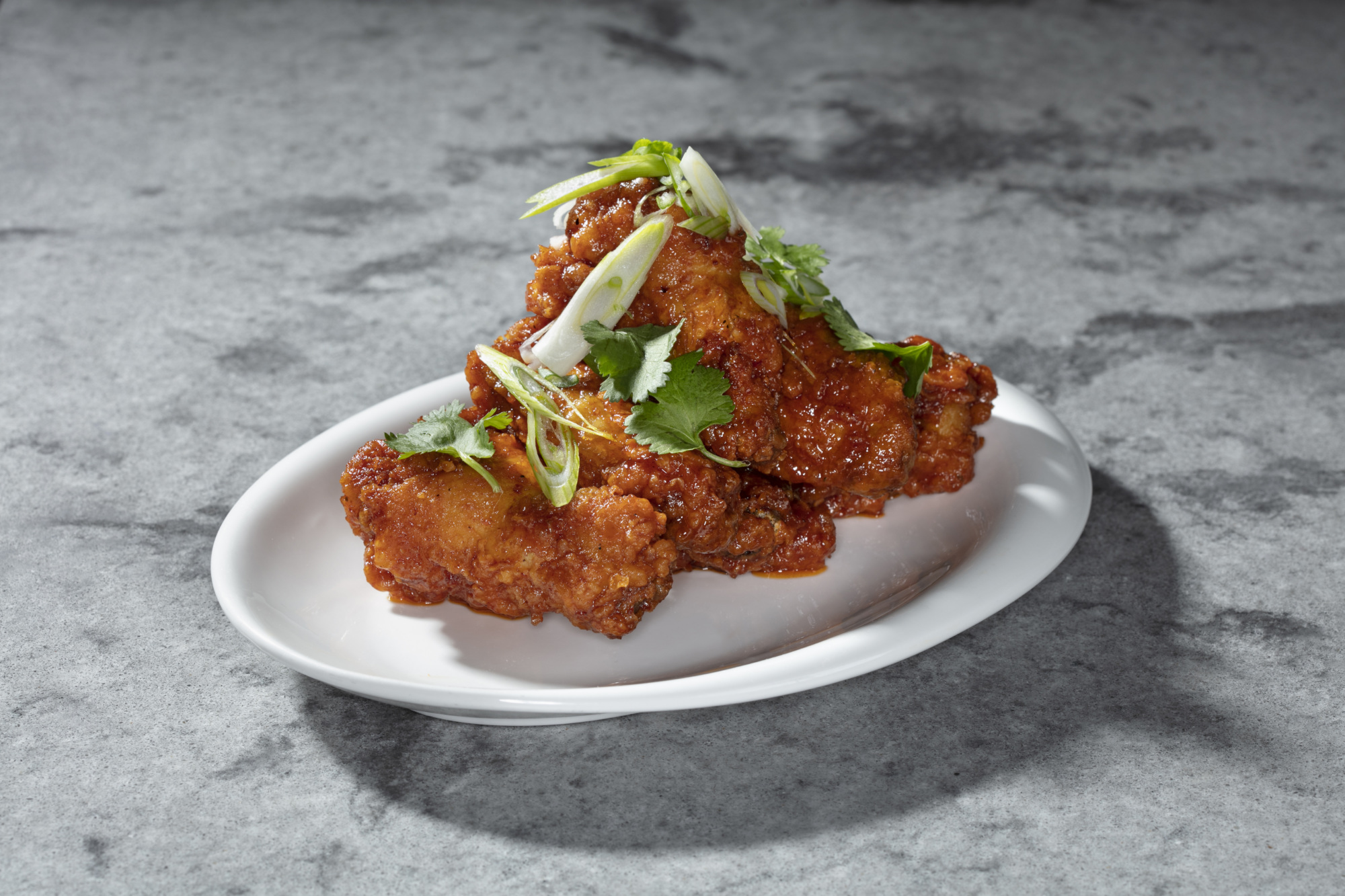

3. Korean Honey Butter Wings
“Who doesn’t love a chicken wing? I used to live in Koreatown for 10 years, and I ate a ton of Korean fried chicken. As an homage to where we are – because we’re very close to Koreatown – and because I’m obsessed with Korea, I wanted to do a fun, different wing that I’ve never done at Pig and Khao.
First, we double-fry them. We coat the wings with egg and a flour mixture with potato starch, baking powder, salt, pepper. We get them cooked and set the breading, and then for the pick-up, we fry them at a higher temperature, and that’s what gets the wings really nice and crispy. The sauce is pretty substantial, so you want a coating that’s gonna hold up to that sauce and stays crispy for a really long time. The sauce is made with gochujang, honey, butter, garlic, chiles, dried Thai chiles – I like to use these instead of the Korean ones because I want the sauce to be a little spicier – fish sauce, and soy sauce. The wings are sweet, savory, and very rich. I can eat two of them, and then it’s too much for me. The texture is really great. They’re super, super crispy.”
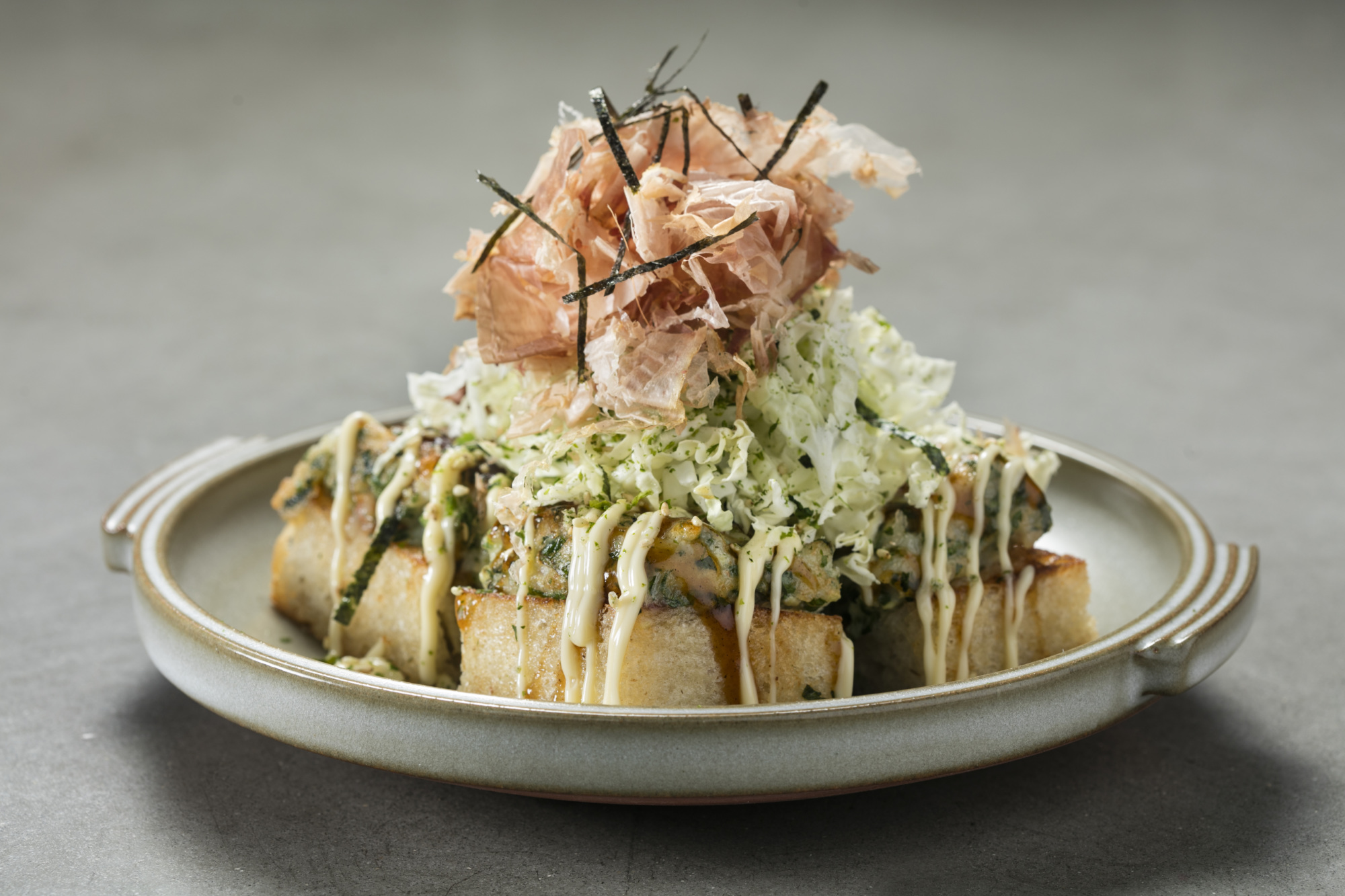
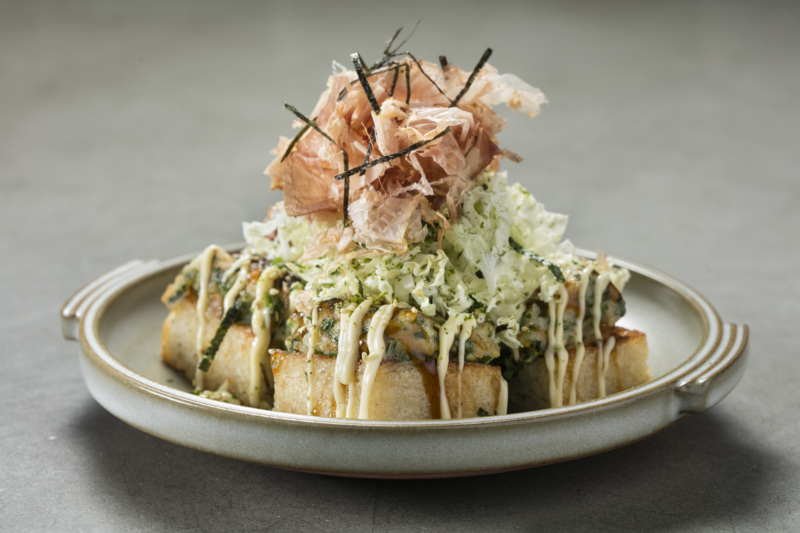
4. Oki Shrimp Toast
“This isn’t currently on the menu at Piggyback, but it’s going to be back on the menu soon. We just don’t have enough staff at the moment; we’re expanding our menu according to how much staff we have. But this is a dish that we had before the pandemic. I first had a version of this in Hong Kong in 2018, and I was obsessed with it. I had never seen this before and I just thought it was really cool. I said, ‘Oh my God, I need to do something like this at one of my restaurants!’ It’s a shrimp toast but we do it on milk bread, and we make our own shrimp mousse.
We start with shrimp that’s peeled, deveined, and cleaned, and then we pulse that in the food processor. There’s not a lot of fat in shrimp, right? So, we add a little bit of pork fat to give it texture and moisture so it doesn’t dry out when cooking, and it also helps with a mouthfeel that’s silkier and smoother. And then I add sesame oil, pepper, salt, scallions, and egg whites.
Then we spread it on one side of the milk bread, and we cook that [slice] on a plancha with butter. And then we put the mousse face-down and toast the rest of the bread until it’s crispy and brown. We top it with what you would find in okonomiyaki, like seaweed, okonomiyaki sauce, Kewpie mayo, pickled red ginger, shaved bonito, and furikake. It’s a mash-up of Japanese and Chinese influences in one. It’s light and heavy at the same time. It’s one of my favorite things that we’ve put on the menu.”
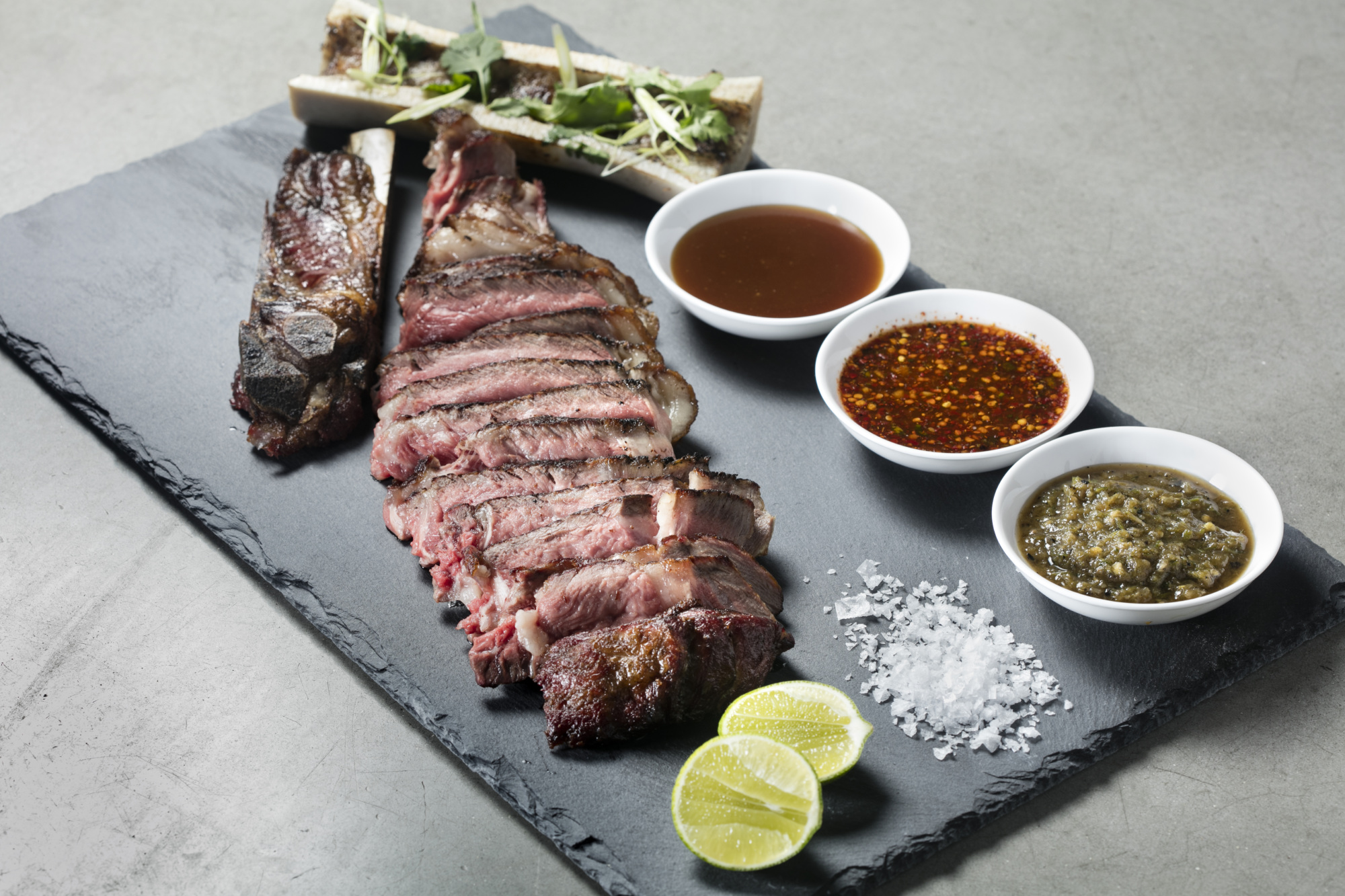
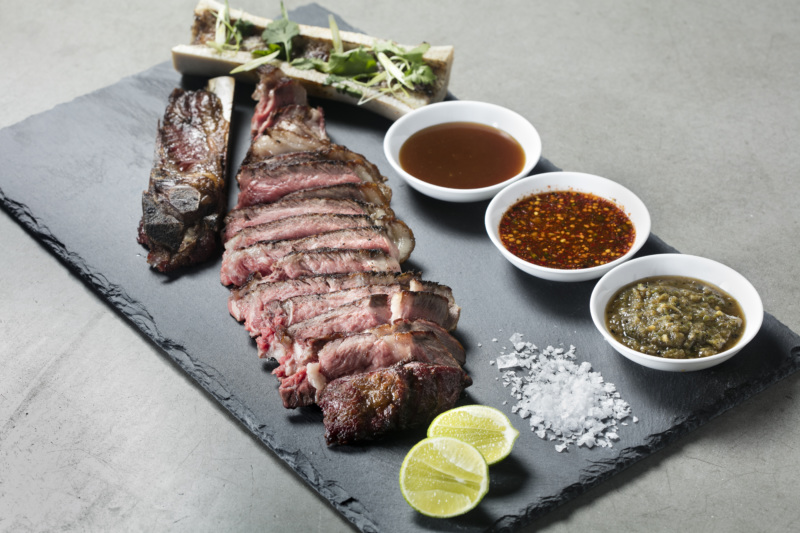
5. Steak for Two
“This is really a dish that we put on the menu for the Midtown crowd. I wanted to do something fun and delicious that office workers or people traveling on business would be interested in ordering. This is a rib eye that’s dry-aged for 30 days and then smoked and served with roasted bone marrow. You’re supposed to scoop the bone marrow and put it on top of the beef.
It’s served with two different Thai sauces. The first one is a relish with chard and different types of chiles – jalapenos; green Thai chiles; and the long banana chiles – and grilled shallots. We also grill shrimp paste in a banana leaf, and all of that gets pounded in a mortar and pestle with cilantro root (that’s a traditional Thai ingredient) and seasoned with fish sauce and palm sugar. It has this really deep, rich, and refreshing flavor to it. It’s not especially spicy, but a little on the sweeter side.
We also serve [the steak] with a spicier jaew dipping sauce. We pound cilantro root with garlic, palm sugar, fish sauce, Thai chile flakes. And then we add tamarind paste, lime juice, galangal powder, and rice powder, which thickens it up slightly. And then we chop up lime leaves. Those sauces give a little variety from the aged steak that your normal steakhouse would give you.”
Discover More

Stephen Satterfield's Corner Table















